
On January 31, New York City councilman Robert Holden wrote a letter to Manhattan District Attorney Alvin Bragg calling for reopening of the investigation into the death of Dorothy Kilgallen.
Described by Ernest Hemingway as “one of the greatest women writers in the world,” Kilgallen was a regular on the CBS game show What’s My Line who wrote a column for the New York Journal-American during the early 1960s that was syndicated to 200 newspapers.[1]
After John F. Kennedy was assassinated on November 22, 1963, Kilgallen was one of the few journalists to question the findings of the Warren Commission report that Lee Harvey Oswald was the lone assassin.
Kilgallen interviewed Jack Ruby at his trial and exposed his Warren Commission testimony before its release date, causing FBI Director J. Edgar Hoover to become a mortal enemy.[2]
If she had lived past the age of 52, Kilgallen’s goal was to expose evidence pointing to the truth about the JFK assassination and corruption at the Warren Commission passed on to her by Commission member Senator John Sherman Cooper of Kentucky in a “tell-all” book she was writing for Random House.

Kilgallen’s body was found in her Manhattan townhouse on the morning of November 8, 1965, sitting upright in a bed in the master bedroom.
Kilgallen’s death was officially determined to have been caused by a combination of alcohol and barbiturates, with the police stating that there was no indication of violence or suicide. New York City Medical Examiner James Luke said that the circumstances of her death were undetermined, though “the overdose could well have been accidental.”
However, numerous people close to Kilgallen recognized at the time that the overdose was not accidental. The chief counsel of 1979 House Select Committee on Assassinations (HSCA), G. Robert Blakey, said that though the HSCA’s look into Kilgallen’s death was not substantial, “we thought it was fishy.”[3]
Kilgallen’s hairdresser Marc Sinclaire, the first to report Kilgallen’s death at 9:30 a.m. on November 8 after passing by her home, was suspicious because a) Kilgallen was found in a room where she did not normally sleep wearing fancy clothes she would not have gone to sleep in; b) was found sitting up with a book turned upside down (The Honey Badger by Robert Ruark) she had finished weeks before; c) had poor eyesight and required glasses to read but no glasses were found in the room where she died; and d) because a police car was parked outside the townhouse when Sinclaire got there, though Kilgallen’s death had not yet been reported.

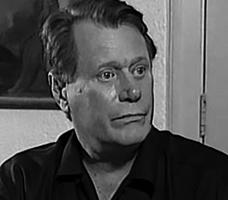
Sinclaire ruled out suicide further because Dorothy was a) religiously Catholic; b) cheerful about life; c) at the peak of her fame, earning an income of $200,000 per year (equivalent to $1.5 million today); and d) intent on completing her tell-all book on the JFK assassination.
Sinclaire also knew that Kilgallen would not overdose because she did not have a drug problem or drink heavily. In the days before her death, additionally, she had confided in him her belief that someone close to her was a “snitch” who was watching her closely and feeding information to people who wished to do her harm.[4]
Johnnie Ray, Kilgallen’s lover whom Tony Bennett called “the father of rock ’n’ roll,” told a friend that he did not believe Dorothy had died of natural causes. Dorothy had told him that she had been investigating the JFK assassination and was “close to breaking the whole case open” and had “been threatened as a result of her work.”[5]

Other people who expressed suspicion about Kilgallen’s death included:
- Melvin Belli, Jack Ruby’s lawyer, who said: “They killed Dorothy; now they’ll go after Ruby.”
- Gossip columnist Liz Smith, who wrote in her column: “Dorothy knew too much. Her murder was very mysterious.”
- Bob Schulenberg, a good friend of Dorothy’s daughter Jill, who told him: “My mother was murdered [because of her work on the JFK assassination].”
- Eileen Broich, the wife of toxicologist John Broich, who said that her husband told her that “Dorothy was bumped off.”[6]
- Dr. Charles Umberger, Director of Toxicology in the Department of Pathology at the New York City Medical Examiner’s office.
- Watergate Burglar and undercover CIA operative Frank Sturgis, who told Marita Lorenz, Fidel Castro’s lover and a fellow CIA agent, that “Kilgallen got whacked” because of her intention to publish a book which included information from her exclusive interviews with Jack Ruby.[7]

Cracking the Case

Mark Shaw is a former criminal defense attorney and TV legal analyst who researched the Kilgallen case for a long period and appears to have solved it.
Shaw first learned about the Kilgallen case while practicing law with Melvin Belli, Jack Ruby’s attorney in the 1980s, and developed great admiration for Kilgallen.
In three books—The Reporter Who Knew Too Much (2016); Collateral Damage (2021); and Fighting For Justice (2022)—he lays out the evidence about Kilgallen’s murder and shows who was behind it.

One of the oddities that Shaw found was that Kilgallen’s death certificate—which pointed to her death being accidental—was signed by Dr. Dominick DiMaio, the deputy chief of the Office of the Medical Examiner (ME) in Brooklyn, even though Kilgallen was found dead in Manhattan.
Shaw was told by one of his sources, Stephen Goldner, a forensic toxicologist at the Manhattan ME’s office, that it was “known or rumored that DiMaio was known to take care of things for the mafia.”[8]
Goldner had told Eileen Broich, the wife of his colleague John Broich, that he was writing a book about how the Mafia “controlled the New York City ME’s office in the mid 1960s.” He also told Broich’s son Chris that his dad had been “one of the heroes because he wouldn’t alter toxicology reports like others did in the MEs office.”[9]

Kilgallen was found with two barbiturates in her bloodstream that she had never before consumed—Nembutal and Tuinal—which indicated foul play.
There were two glasses present at her bedside table, which meant that someone was in the bedroom with her when she died. Kilgallen’s butler James Clement, told Kilgallen’s daughter that he remembered that Dorothy was accompanied by a man when she arrived home during the early morning hours before she died.
Evidence that her drink had been spiked was reflected in the fact that powdered traces of the barbiturates were found on one of the glasses at her bedside. If by some chance she had committed suicide, Kilgallen would have taken it in capsule form, which would have left no residue. Shaw writes that the “powdered barbiturates undercut the accidental death conclusion of ME Dr. Luke.”[10]
The accidental death conclusion is further undercut by the fact that Kilgallen was found wearing false eyelashes, a hairpiece and makeup that she never wore to bed, which indicated that she was dressed up after she had been killed.
The air conditioner was turned on in her apartment even though it was fifty-five degrees outside, which offered a clue that Kilgallen was murdered because, according to Dr. Charles A. Mathis, a fellow at the prestigious American College of Cardiology,, “in a cold environment, alcohol and barbiturates are all respiratory suppressants.”[11]

The million-dollar question that Shaw had to try to answer was who Kilgallen’s guest was who was drinking from the second glass that was found at her bedside.
His answer is a fellow journalist named Ronald Pataky, a film and drama critic for The Columbus Citizen-Journal, who had met Kilgallen in June 1964 on the set of The Sound of Music in Austria during a press junket. Friends called Pataky, to whom Dorothy gave an apartment and Thunderbird automobile, Dorothy’s “boy toy.” [Pataky was 23 years younger than Kilgallen][12]
A good-looking man who had an affair with Frank Sinatra’s wife Mia Farrow, Pataky had a violent past: He was arrested after getting drunk and throwing a glass across the room at Cinderfella (1960) actress Anna Maria Alberghetti who was then his fiancee, and for firing four shots with a .38 caliber pistol at former NFL player Jim Otis and threatening him with a blackjack.
After he dropped out of Stanford University in the mid 1950s, Pataky allegedly enrolled in the School of the Americas in Panama, the infamous CIA training ground for Latin American security forces.
In late 2019, Shaw was told by a credible confidential source, the Las Vegas Sands Hotel and Casino pit boss during the 1960s who had experience working for the FBI and CIA, that Pataky had landed in some kind of trouble prior to Kilgallen’s death. He was saved by agreeing to become a mole and do dirty work for CIA and FBI agents and underworld figures who were closely monitoring Kilgallen’s JFK investigation and intentions to publish a Random House book.[13]
Author Sara Jordan-Heinz found further evidence of Pataky’s links to the CIA. Her father Larry interviewed Pataky who told him that he went to Guatemala in the early 1950s for “a small military thing. There was a communist uprising in Guatemala.”
The small military thing was the CIA’s 1954 coup that ousted social democratic leader Jacobo Arbenz.
The CIA had been active at Stanford University, where Pataky went to college, and he would have been a good candidate for the Guatemalan incursion because he excelled at Spanish. Pataly further admitted to Jordan that he attended a CIA assassination school in Panama, which was originally reported by Penn Jones.
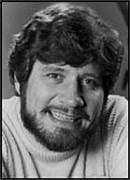
Pataky’s key task with regards to Kilgallen was to provide his handlers with the secret information that Kilgallen had uncovered in the course of her investigation—information that was lethal in nature.
According to Shaw, Kilgallen and Pataky, on the night of her death, had drinks at the Regency Hotel bar in a back booth where Pataky likely slipped the barbiturates into Dorothy’s drink.
Afterwards, Pataky drove Dorothy back to her townhouse and gave her a glass of water and transferred the remnants of the Nembutal (barbiturate) onto the rim of the glass.
Pataky then assisted Dorothy in getting to her bedroom, and as she passed out, began to search for her JFK assassination research file, including in her closet where Dorothy’s clothes were found strewn about the next morning.
As Pataky searched Dorothy’s house, Shaw believes that he found her dead on the bathroom floor after she had ingested some Pepto Bismol because of her stomach pain. In the minutes before, Dorothy likely experienced bradycardia, a condition marked by a slow heart rate accompanied by dizziness and fainting.
When the body was discovered in the bathroom, Pataky and, possibly, the butler Clement, and Dorothy’s estranged husband, Richard Kollmar, who stayed on a lower floor and discovered Kilgallen’s body, undressed her, replacing her soiled dress with the clothes she was wearing when she was discovered by Marc Sinclaire.[14]
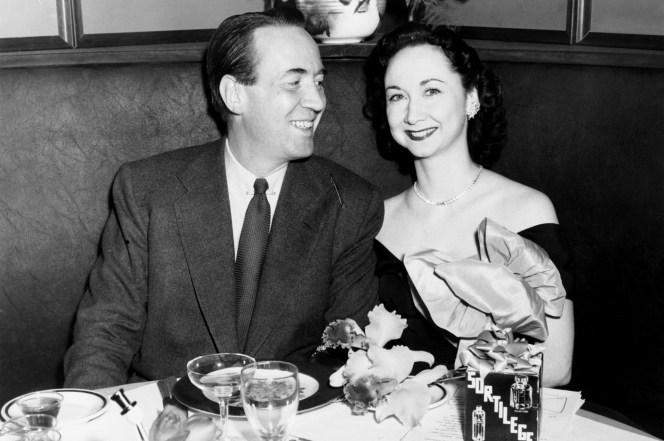
According to Shaw, Pataky panicked when he could not find her JFK assassination file and phoned his contacts. They called FBI Director J. Edgar Hoover, who sent his operatives to Kilgallen’s townhouse in search of the file. These were the FBI agents (or rogue agents posing as FBI agents) that James Clement saw taking boxes of Kilgallen’s documents and papers away despite his protest.

Taking cues from Hoover, the police only came into Dorothy’s townhouse at 3:00 p.m., hours after Marc Sinclaire had discovered Dorothy’s body and reported her death.
The police investigation afterwards was completely shoddy, with police never searching for fingerprints or combing Dorothy’s townhouse for clues. Additionally, they failed to interview key witnesses, including Marc Sinclaire and Pataky and patrons at the Regency Hotel.[15]
Pataky basically confessed to his own guilt in two poems that he posted on his website in 2016. The poems were uncovered by Shaw and then taken down from the website soon after Shaw viewed them.
The first poem titled “Never Trust a Stiff at a Typewriter,” read:
There’s a way to quench a gossip’s stench
That never fails
One cannot write if zippered tight
Somebody who’s dead could tell no tales.”[16]
Kilgallen was a gossip columnist so obviously Pataky was talking about her.
A second poem by Pataky read:
“While I’m spilling my guts
She’s driving me nuts
Please fetch us two drinks
On the run
Just skip all the nois’n
Make one of ’em poison
And don’t even tell me
Which one![17]
This poem is equally incriminating because it references the putting of poison into one of the drinks—the method by which Kilgallen was murdered that only the killer would know.[18]
According to Shaw, Pataky’s cousin, Belva Elliot, said years after Kilgallen’s death that “there’s no reason to dig up the past. Don’t want to hurt Ronnie, but he admitted the poems he wrote about the poisoning, about the zippered tight, were about Dorothy.”[19]
Elliot added that “Ronnie told me Kilgallen was poisoned because she was too close to the truth about the JFK assassination. Ron wouldn’t say by whom and yes Kilgallen bought an apartment for Ron and a Thunderbird and Ron said he talked to Dorothy just before she died.”[20]

A Journalist Who Should Be Remembered
Shaw makes a case that Kilgallen should be remembered as one of the great journalists of the 20th century.

Her father, Jim, had been a star reporter for the Hearst organization who said that Dorothy “had an unerring instinct for news…a brilliant style of writing. She was accurate and had a flair for the apt phrase. She had an uncanny ability to produce scoops and an inordinate speed in turning out copy.”[21]
Paul Schoenstein, an editor at the New York Journal-American where Dorothy had started her career in 1931 and wrote, said that “Dorothy was far and away the greatest reporter there was.”[22]
At the time of her death, Kilgallen was in the process of writing a true-crime book, Murder One (1967), which included the case of an Ohio doctor whose conviction Kilgallen’s reporting had helped to overturn.
Though leaning to the right politically, Kilgallen had been one of the first reporters to allege that the CIA and organized crime were teaming up to eliminate Fidel Castro.[23] She had also raised suspicions of foul play in the death of Marilyn Monroe.[24]

Kilgallen became invested in the Kennedy assassination case in part because of a friendship that she had struck with him; he once met with her and her son in the White House.
In one column, Kilgallen pointed out that, after JFK was shot, Dallas Police Chief Jesse Curry, who was in the first limo of the presidential motorcade, issued orders to “get a man on top of the overpass and see what happened there [atop the grassy knoll].” The next day, Curry lied when he told reporters he thought the shots came from the Texas School Book Depository.[25]

Kilgallen’s column on November 14, 1965, “Why Did Oswald Risk All by Shooting Cop,” questioned whether Oswald was the one who shot police officer J.D. Tippit after killing Kennedy, as was alleged.
Kilgallen wrote that “a man who knows he is wanted by the authorities after a spectacular crime does not seek out a policeman usually unless he decided to give himself up, and certainly Oswald was not doing that.”[26]
Kilgallen had been tipped off by a witness, Acquila Clemons, who, contrary to the Warren Report, said that she saw two men involved in the murder of Officer J.D. Tippit, not one, and that neither of the men resembled Oswald.[27]
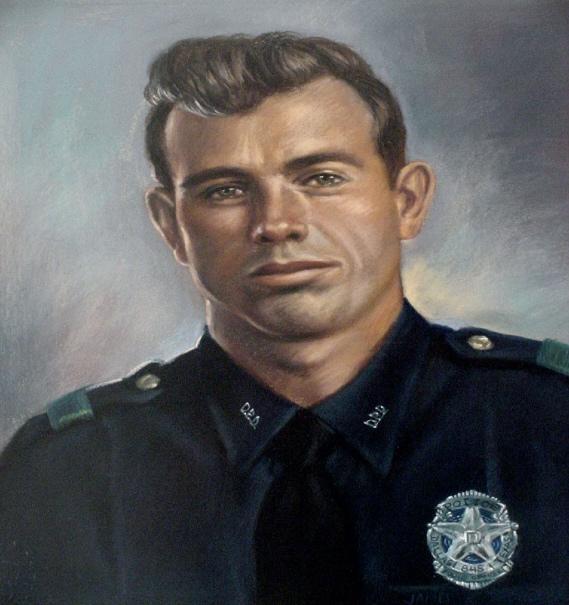
Kilgallen also reported that Tippit had met with Jack Ruby in Ruby’s Carousel club eight days before the assassination, indicating he may have been part of the conspiracy to assassinate JFK.[28]
Later investigators determined that Oswald could not have been in the location that Tippit was shot at the time Tippit was killed.[29]
Because of the wide reach of her columns, Kilgallen served as a conduit for information supplied to her on the JFK assassination by Mark Lane, a lawyer who wrote the 1966 best-selling book Rush to Judgment, the first book to critique the Warren Commission.[30]
Lane said that Kilgallen was “a very, very serious journalist. You might say that she was the only serious journalist in America who was concerned with who killed John Kennedy and getting all of the facts about the assassination.”[31]

Dorothy had told Lane that their investigations into the Kennedy assassination were dangerous and that the “intelligence agencies will be watching us. We’ll have to be very careful.”[32]
Kilgallen was indeed subjected to FBI surveillance, with the FBI tapping her home phone line. The CIA also had 53 field offices around the world watching her on her foreign travels.[33]
At one point, two FBI agents visited Kilgallen to find out how she got Ruby’s testimony before the Warren Commission. She made the agents tea but told them that she could never reveal how she got that exhibit or who gave it to her.[34]
J. Edgar Hoover, in one of the reports that he received, scribbled “Wrong” next to a copy of Kilgallen’s November 29, 1963, column, “Oswald File Must Not Close.”
The column questioned how “Ruby—the owner of a strip-tease honky tonk—could have strolled in and out of police headquarters in Dallas as if it were a health club at a time when a small army of law enforcers were keeping a ‘tight security guard’ on Oswald.”
Kilgallen further wrote that “so many people were saying there was something queer about the killing of Oswald, something strange about the way his case was handled, a great deal missing in the official account of his crime. The American people have just lost a beloved president. It was a dark chapter in our history, but we have the right to read every word of it [the Oswald file]. It cannot be kept locked in a file in Dallas.”[35]

In another column, Kilgallen called the Warren Commission report “laughable” and wrote of Jack Ruby’s statement to her that “the world will never know the true facts of what occurred. My motives, the people who had, that had so much to gain and had such a material motive to put me in the position I’m in would never let the true facts come above board to the world.”[36]
Kilgallen interviewed Ruby twice, including a private 30 minute interview in the chambers of Judge Joe Brown absent his bodyguards, and came to believe that Ruby was a patsy who had been used and then discarded by the coordinators of the Kennedy assassination.[37]
She never published any information she obtained from her private talks with Ruby because she was “saving it for the book,” according to Pataky. But Kilgallen did suggest in one of her columns that there were witnesses who saw Oswald inside Ruby’s Carousel Club.[38]
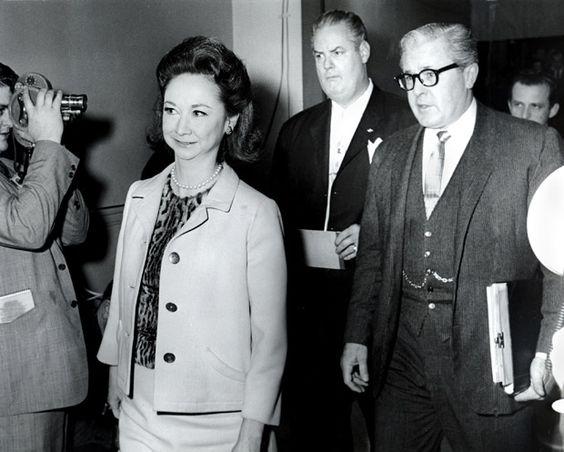
Prior to her death, Kilgallen had been planning to travel a second time to New Orleans for a “cloak-and-daggerish” type trip in which she aimed to further trace Ruby’s past, his mob ties and Oswald’s background, which were also all going to be discussed in her book.[39]
All the material she compiled on the case was placed in her assassination file—which more than one person saw since, at times, she would carry it around with her.[40]

Kilgallen’s views on the JFK assassination were summarized when she said that “the whole thing smells a bit fishy. It’s a mite too simple that a chap kills the President of the United States, escapes from that bother, kills a policeman, eventually is apprehended in a movie theater under circumstances that defy every law of police procedure, and subsequently is murdered under extraordinary circumstances.”[41]
On September 3, 1965, three months before her death, Kilgallen published her last column on the JFK assassination in which she wrote “Those close to the scene realize that if the widow of Lee Harvey Oswald (now married to another chap) ever gave out the ‘whole story’ of her life with President Kennedy’s alleged assassin, it would split open the front pages of newspapers all over the world.” Kilgallen further wrote that “this story is not going to die as long as there’s a real reporter alive—and there are a lot of them.”[42]
Unfortunately, for history’s sake, there really was only one real reporter and, when she died, so too did the story. The blackout was evident just before Kilgallen’s death in June 1965 when she planned to speak about the Warren Report on ABC’s Nightlife, having brought parts of her JFK assassination research file, but was told by the show’s producer that the network did not want her to address the subject because it was “too controversial.”[43]
Hugh Aynesworth, the only reporter present in Dealey Plaza when Kennedy was fatally shot, in the Texas Theater when police arrested Lee Harvey Oswald, and in the Dallas Police Department when Jack Ruby shot Oswald, wrote to Life Magazine editor Holland McComb in November 1966 that the press had failed to cover the JFK assassination story, stating “few people did much. Fewer newspapers or TV stations took the time to cover the situation adequately.”[44]
In 1967, the CIA issued a memo to its media assets imploring them to label as “conspiracy theorists” and far-left extremists any investigator who dared challenge the veracity of the Warren report. When New Orleans District Attorney Jim Garrison began probing deeply into the case and prosecuted CIA agent Clay Shaw, he was accused not only of being a conspiracy theorist but also of bribing witnesses and to be suffering from psychoneurosis.[45]
In hindsight, it seems clear that Kilgallen’s murder was intended not only to ensure the theft of her file on the assassination but also to intimidate and silence other reporters who might have been intent on probing into the case.
The historical implications were huge, contributing no less to the destruction of the free press in the U.S. which no longer exists.

-
The column was called “The Voice of Broadway.” ↑
-
Kilgallen had received an advance copy of the Warren Commission Report whose gaps, contradictions and lies she helped to expose. ↑
-
Mark Shaw, Fighting For Justice: The Improbable Journey For Exposing Coverups About the JFK Assassination and Deaths of Marilyn Monroe and Dorothy Kilgallen (Post Hill Press, 2022), 65. The HSCA primarily investigated the JFK and Martin Luther King Jr. assassinations. ↑
-
Mark Shaw, Collateral Damage: The Mysterious Deaths of Marilyn Monroe and Dorothy Kilgallen, and the Ties That Bind Them to Robert Kennedy and the JFK Assassination (Franklin, TN: Post Hill Press, 2021), 286; Sara Jordan, “Who Killed Dorothy Kilgallen,” Midwest Today, 2007, https://www.midtod.com/dorothys.pdf. ↑
-
Mark Shaw, The Reporter Who Knew Too Much: The Mysterious Death of What’s My Line TV Star and Media Icon Dorothy Kilgallen (Franklin, TN: Post Hill Press, 2016), 207. ↑
-
Shaw, Collateral Damage, 511. ↑
-
Shaw, Collateral Damage, 460. Sturgis bragged that “we can kill anybody we want. Just blame it on national security.” ↑
-
Shaw, The Reporter Who Knew Too Much, 284. See also Sara Jordan-Heintz, The Incredible Life & Mysterious Death of Dorothy Kilgallen (Page Turner Books International, 2023). ↑
-
Shaw, The Reporter Who Knew Too Much, 281. John Broich had to leave the ME’s office. He said that the Mafia was intimidating him and that he was terrified. According to Goldner, Broich was strong-willed and would not be bought or pressured to fudge results like others. Also according to Goldner, two-thirds of the staff at the ME’s office were Sicilian and some were listed with phony credentials and were not actually chemists. ↑
-
Shaw, The Reporter Who Knew Too Much, 279; Shaw, Collateral Damage, 516. ↑
-
Shaw, Fighting For Justice, 132. ↑
-
Shaw, Collateral Damage, 460; Jordan, “Who Killed Dorothy Kilgallen?” 19. Recipient of a journalism degree from Ohio State in the 1950s, Pataky years later earned a master’s degree in Christian Counseling from Jerry Falwell’s Liberty University in Lynchburg, Virginia, and a Ph.D. in Christian Counseling from Trinity Theological Seminary in Newburgh, Indiana. Jordan, “Who Killed Dorothy Kilgallen?” 23. ↑
-
Shaw, Collateral Damage, 460. Shaw emphasizes that the authenticity of his source was confirmed by Gianni Russo on his podcast “The Hollywood Godfather” in March 2020. According to the source who knew Frank Sinatra, Pataky was sent by Mafia associates to Las Vegas to check on a blackjack dealer who was supposedly cheating. Pataky allegedly confirmed the dishonesty of the dealer, whom the Mafia killed. ↑
-
The fact that the air conditioner was on was very odd since it was cold outside. ↑
-
Shaw, The Reporter Who Knew Too Much, 271, 274. Oddly, a movie magazine editor named Mary Branum received a phone call the morning after Kilgallen was killed. The voice said “Dorothy Kilgallen has been murdered” before hanging up. ↑
-
Shaw, The Reporter Who Knew Too Much, 257. ↑
-
Shaw, The Reporter Who Knew Too Much, 258. ↑
-
Shaw, Collateral Damage, 467. Pataky died on May 16, 2022. ↑
-
Shaw, Collateral Damage, 467. ↑
-
Shaw, Collateral Damage, 467. ↑
-
Shaw, The Reporter Who Knew Too Much, 127. Jim covered the 1919 Black Sox scandal, Alger Hiss case, and surrender of Nazi Germany in World War II among other important stories in his journalism career. ↑
-
Shaw, Collateral Damage, 28. ↑
-
Shaw, The Reporter Who Knew Too Much, 34. ↑
-
Jordan, “Who Killed Dorothy Kilgallen?” ↑
-
Jordan, “Who Killed Dorothy Kilgallen?” 19. Kilgallen also reported on the intimidation of witnesses in the case by the Dallas police and FBI. ↑
-
Shaw, The Reporter Who Knew Too Much, 78. ↑
-
Lee Israel, Kilgallen: A Biography of Dorothy Kilgallen (New York: Delacorte Press, 1979), 395. ↑
-
Israel, Kilgallen, 373. Some researchers believe that Tippit was one of the assassins of JFK. Kilgallen’s reporting on Tippit’s ties to Ruby came from the reporting by Thayer Waldo of the Fort Worth Star Telegram, which Waldo supplied to Mark Lane though was too afraid to himself publish, telling Lane that “if he published what he knew “there would be real danger to him.” ↑
-
See Joseph McBride, Into the Nightmare: My Search for the Killers of President John F. Kennedy and Officer J. D. Tippit (Berkeley, CA: Hightower Press, 2013). ↑
-
Israel, Kilgallen, 373. ↑
-
Shaw, The Reporter Who Knew Too Much, 78; Shaw, Fighting For Justice, 94. ↑
-
Shaw, The Reporter Who Knew Too Much, 82. ↑
-
Jordan, “Who Killed Dorothy Kilgallen?” 23. ↑
-
Israel, Kilgallen, 395. ↑
-
Shaw, The Reporter Who Knew Too Much, 175. ↑
-
Shaw, The Reporter Who Knew Too Much, 88. ↑
-
Penn Jones Jr. Forgive My Grief II: A Further Critical Review of the Warren Commission Report on the Assassination of President John F. Kennedy (Midlothian Texas: The Midlothian Mirror Inc., 1967), 12, 13. ↑
-
Shaw, The Reporter Who Knew Too Much, 66, 67. ↑
-
Shaw, The Reporter Who Knew Too Much, 188; Jordan, “Who Killed Dorothy Kilgallen?” 20. Melvin Belli called Kilgallen’s scoop on Ruby the “ruin of the Warren Commission.” Kilgallen’s trip to New Orleans was a year before New Orleans District Attorney Jim Garrison began his famed investigation into the JFK assassination and charged Clay Shaw as a conspirator. ↑
-
Israel, Kilgallen, 401. ↑
-
Israel, Kilgallen, 396. ↑
-
Shaw, The Reporter Who Knew Too Much, 91. ↑
-
Israel, Kilgallen, 401. ↑
-
Hugh Aynesworth to Holland McCombs, Dallas, Texas, November 29, 1966. From the file of Robert Morrow. For other suspicious deaths of journalists investigating the JFK assassination, see Jones Jr. Forgive My Grief II, 13.. Jones Jr. discusses the case of Jim Koethe, a journalist working for the Dallas Times Herald writing a book on the Kennedy assassination who was killed after a man broke into his home in late November 1964 and karate chopped his throat. Jones Jr. also discusses the mysterious death of Kilgallen’s close friend Ms. Earl E.T Smith (Florence Pritchett), wife of the former U.S. ambassador to Cuba at age 45 two days after Kilgallen’s death, stating that the cause of death was listed in the autopsy as unknown. Jones Jr. suggests that it was possible that Smith was given Kilgallen’s notes for her book on the JFK assassination. ↑
-
See, for example, Hugh Aynesworth, “’Big Jim’s Three-Ring Shaw Trial a One-Man Show,” The Pittsburgh Press, February 2, 1969. Kilgallen’s colleague Bob Considine was characteristic in branding critics of the Warren report as “opportunists,” “crackpots,” and “graverobbers” in his introduction to a 1967 book written by Ricardo Warren Lewis, The Scavengers and Critics of the Warren Report: The Endless Paradox (New York: Dell, 1967). Israel, Kilgallen, 401. ↑
CovertAction Magazine is made possible by subscriptions, orders and donations from readers like you.
Blow the Whistle on U.S. Imperialism
Click the whistle and donate
When you donate to CovertAction Magazine, you are supporting investigative journalism. Your contributions go directly to supporting the development, production, editing, and dissemination of the Magazine.
CovertAction Magazine does not receive corporate or government sponsorship. Yet, we hold a steadfast commitment to providing compensation for writers, editorial and technical support. Your support helps facilitate this compensation as well as increase the caliber of this work.
Please make a donation by clicking on the donate logo above and enter the amount and your credit or debit card information.
CovertAction Institute, Inc. (CAI) is a 501(c)(3) non-profit organization and your gift is tax-deductible for federal income purposes. CAI’s tax-exempt ID number is 87-2461683.
We sincerely thank you for your support.
Disclaimer: The contents of this article are the sole responsibility of the author(s). CovertAction Institute, Inc. (CAI), including its Board of Directors (BD), Editorial Board (EB), Advisory Board (AB), staff, volunteers and its projects (including CovertAction Magazine) are not responsible for any inaccurate or incorrect statement in this article. This article also does not necessarily represent the views the BD, the EB, the AB, staff, volunteers, or any members of its projects.
Differing viewpoints: CAM publishes articles with differing viewpoints in an effort to nurture vibrant debate and thoughtful critical analysis. Feel free to comment on the articles in the comment section and/or send your letters to the Editors, which we will publish in the Letters column.
Copyrighted Material: This web site may contain copyrighted material the use of which has not always been specifically authorized by the copyright owner. As a not-for-profit charitable organization incorporated in the State of New York, we are making such material available in an effort to advance the understanding of humanity’s problems and hopefully to help find solutions for those problems. We believe this constitutes a ‘fair use’ of any such copyrighted material as provided for in section 107 of the US Copyright Law. You can read more about ‘fair use’ and US Copyright Law at the Legal Information Institute of Cornell Law School.
Republishing: CovertAction Magazine (CAM) grants permission to cross-post CAM articles on not-for-profit community internet sites as long as the source is acknowledged together with a hyperlink to the original CovertAction Magazine article. Also, kindly let us know at info@CovertActionMagazine.com. For publication of CAM articles in print or other forms including commercial internet sites, contact: info@CovertActionMagazine.com.
By using this site, you agree to these terms above.
About the Author

Jeremy Kuzmarov holds a Ph.D. in American history from Brandeis University and has taught at numerous colleges across the United States. He is regularly sought out as an expert on U.S. history and politics for radio and TV programs and co-hosts a radio show on New York Public Radio and on Progressive Radio News Network called “Uncontrolled Opposition.”
He is Managing Editor of CovertAction Magazine and is the author of six books on U.S. foreign policy, including Obama’s Unending Wars (Clarity Press, 2019), The Russians Are Coming, Again, with John Marciano (Monthly Review Press, 2018), Warmonger. How Clinton’s Malign Foreign Policy Launched the U.S. Trajectory From Bush II to Biden (Clarity Press, 2023); and with Dan Kovalik, Syria: Anatomy of Regime Change (Baraka Books, 2025).
Besides these books, Kuzmarov has published hundreds of articles and contributed to numerous edited volumes, including one in the prestigious Oxford History of Counterinsurgency .
He can be reached at jkuzmarov2@gmail.com and found on substack here.



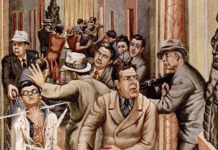


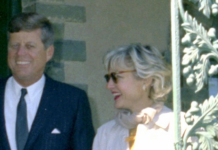




all these books but never the answer – who did it?
I believe it was LBJ. I read a book or something about it and it was very convincing. LBJ it turns out was a very murderous sod and he arranged it all.
I suppose it never comes out because all those involved – and there must have been a lot – are in fear for their own lives and lives of their families if they speak. Plus confessing to being part of a crime wouldn’t come easy would it?
Interesting. That’s the question I had (as non-American, Belgian): why?
Is there any proof of what you wrote?
Great piece Jeremy. Congratulations and thank you
Great article Jeremy. If they can kill president of the United States, who is safe in this country?
Every American president since WW-II, except JFK and Jimmy Carter have killed so many people around the world.
Great article but let’s not kid ourselves: Israel killed JFK because he wanted to put a stop to their nuclear program. Ruby was Rubinstein and he said “I did it for my people”.
Nice work Jeremy the fiercest new advocate for stories unfinished by mysteriously slain investigative journalists!
In the 1960’s people were not aware of the dangers of mixing alcohol and barbiturates, so it was very common for people to die from taking these two drugs together. Nowadays we are more aware of the dangers, so people now avoid mixing the two substances together.